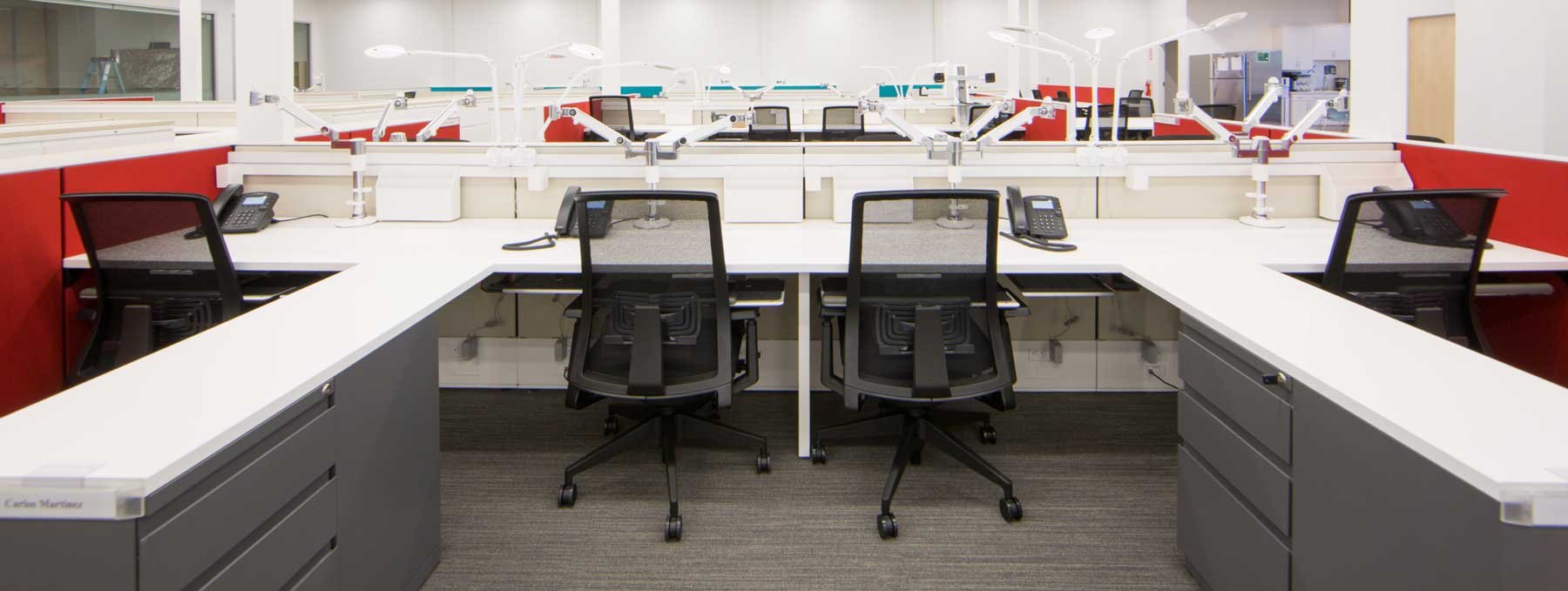 Well-designed open plan offices can be extremely effective for improving employee satisfaction when combined with closed spaces; especially, when tailored to a business’ unique culture. However, open office plans have their distractors with studies citing lower employee performance, among other push backs and issues. We believe open offices have an important place as part of a more balanced approach — a concept that leverages the best benefits of both open and closed workplace design elements.
Well-designed open plan offices can be extremely effective for improving employee satisfaction when combined with closed spaces; especially, when tailored to a business’ unique culture. However, open office plans have their distractors with studies citing lower employee performance, among other push backs and issues. We believe open offices have an important place as part of a more balanced approach — a concept that leverages the best benefits of both open and closed workplace design elements.
Key Study Possibly Flawed
In August of this year, architect Ashley L. Dunn, director of workplace at Dyer Brown in Boston, penned an article for Fast Company rebuking a study that attacked open offices. Conducted by a team of Harvard researchers, the study pointed out flaws with the open concept. The magazine republished an article titled “Here’s the final nail in the coffin of open plan offices", causing a lot of us in the industry to be dumbstruck. We also published an article citing the study, promoting a balanced approach to workplace design.
Download: The Agile Office Transformation Handbook (free download).
Dunn points out that the study focused on extreme open office plans — those whose design had no walls or partitions, just an array of bench-desking.
In other words, the open office as a one-size fits all approach, may be “the nail in the coffin,” but a design that encompasses open plans amongst private spaces are more the norm and a trend in which companies are moving towards.

The Balanced Workplace Wins Out
We echo her in-field knowledge: “As we’ve found in our line of work, designing offices for various organizations and Fortune 500 companies, a thoughtful mix of open and closed spaces is key to any successful office design”. — Dunn
In our work with Fortune 500’s, and companies of varying size, we have helped navigate the shift towards a blended, agile office, outfitting spaces for both collaborative and isolated work. It’s a design that takes into consideration a multigenerational workforce and addresses the impact technology has made in our working lives.
If you haven’t already, download our Agile Office Handbook, complete with case study examples of how open-offices and private spaces are being designed in harmony.
Contact Us
To learn more about our services and products, contact us here:





